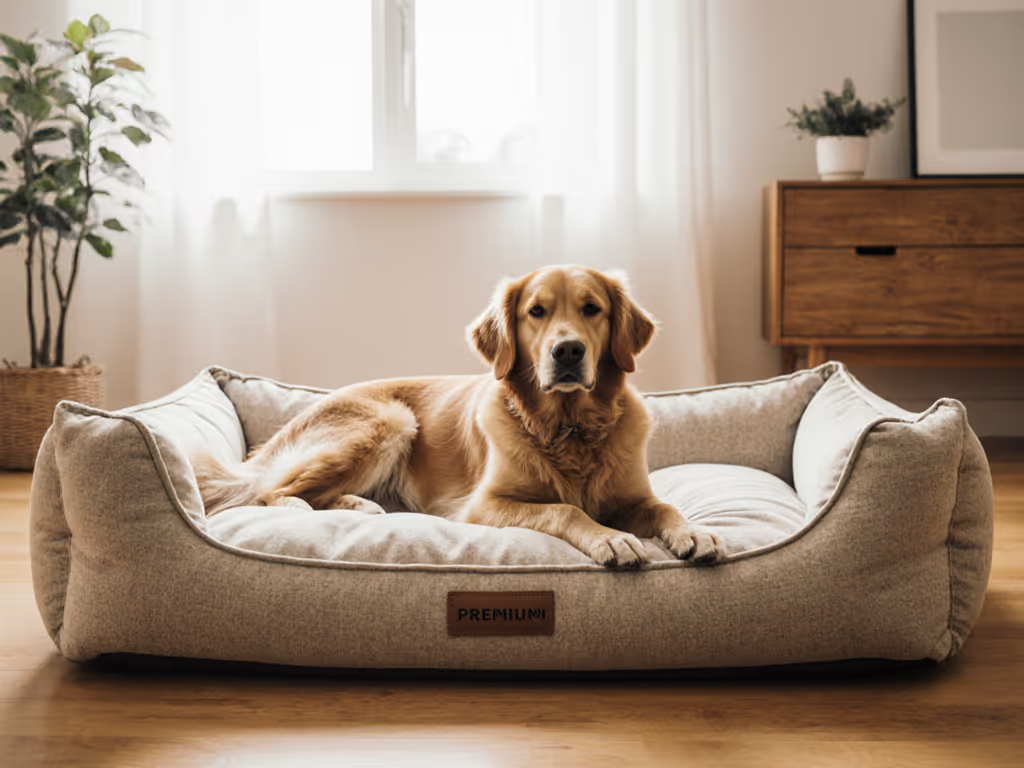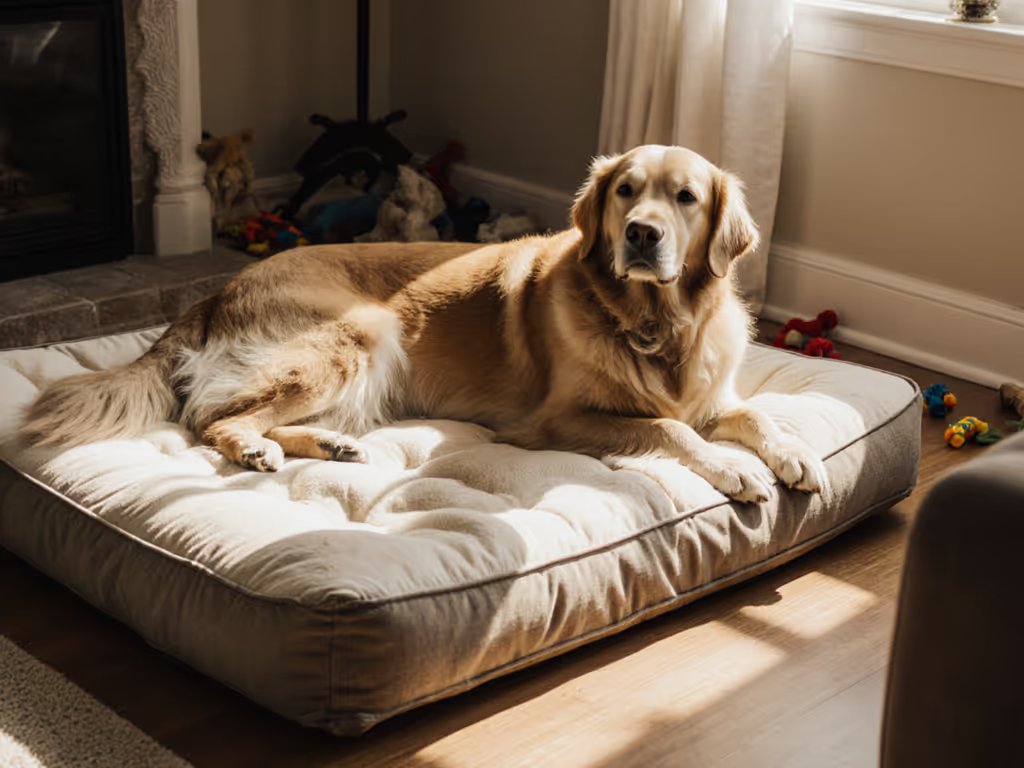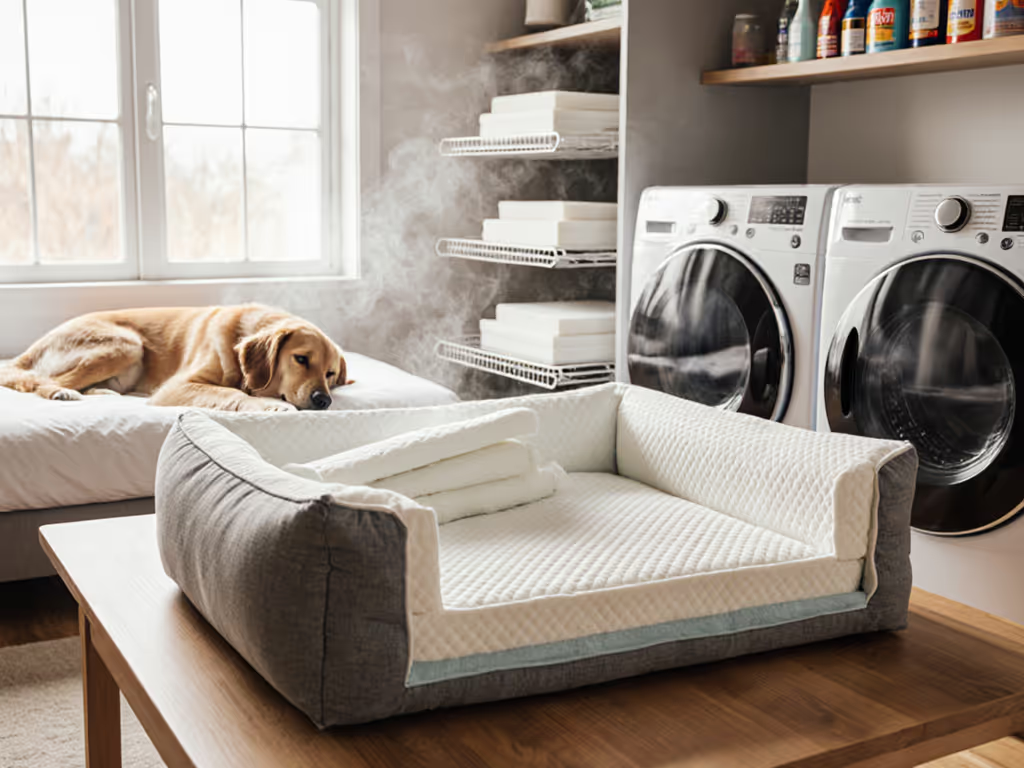
Non-Toxic Dog Bed Safety Guide: What Owners Overlook

When you invest in a dog bed for your furry family member, you're not just buying a place for them to sleep, you are selecting a critical component of their daily environment. Most pet owners focus on comfort, size, or aesthetics when choosing a pet dog bed, neglecting the invisible factors that impact long-term health. Your dog spends 12-14 hours a day in contact with their bed's materials, making chemical exposure a silent concern that directly affects their respiratory health, skin condition, and even neurological development. Let's examine what responsible pet owners consistently miss when evaluating dog bed safety through the lens of durability, chemical exposure, and lifecycle value.
Why flame retardants in dog beds should concern every pet parent
Many manufacturers treat polyurethane foam (the cushioning material in most orthopedic dog beds) with flame retardant chemicals to meet flammability standards. These organophosphorus and halogenated compounds, commonly found in cheaper beds, don't stay contained within the foam. Over time, as the foam degrades (which accelerates with chewing, scratching, and general wear), these chemicals migrate into the air your dog breathes and the dust that settles on your floors. A study by the Environmental Working Group confirmed that dogs carry triple the levels of certain flame retardants in their systems compared to humans, likely because they're closer to the ground and frequently lick their paws after walking on contaminated surfaces.
The health implications are serious: thyroid dysfunction, endocrine disruption, and even neurological impacts. Most concerning? These chemicals become more concentrated as foam breaks down (meaning the beds that appear "worn but still functional" may actually be creating a more hazardous environment than when they were new). This creates a dangerous paradox: the very beds we keep using because they "still seem okay" may be at their most toxic phase.
How to verify "non-toxic" claims without falling for greenwashing
The term "non-toxic dog beds" has become marketing shorthand, but verification requires scrutiny. Start with these concrete checkpoints:
-
CertiPUR-US certification: This verifies foam is made without PBDEs, TDCPP or TCEP flame retardants, mercury, lead, formaldehyde, and phthalates. Crucially, it also confirms low VOC emissions (under 0.5 ppm), which directly impacts indoor air quality.
-
Prop 65 compliance: Indicates products meet California's stringent chemical warning standards, though this alone doesn't guarantee absence of concern.
-
OEKO-TEX Standard 100: Certifies textile components are free from harmful levels of toxic substances.
Don't trust vague claims like "eco-friendly" or "natural" without documentation. Request specific test reports from manufacturers; reputable brands will provide them readily. Track how they respond to follow-up questions about manufacturing processes; transparency correlates strongly with actual safety standards. Remember that covers can be safe while internal foam remains problematic, so verify both components separately.
What's the connection between bed durability and chemical safety?
This is where most pet owners miss a critical insight: bed longevity directly impacts chemical exposure. A low-density foam bed might seem affordable initially, but as it compresses and degrades within months, it releases more particles and previously trapped chemicals. My own experience tracking the cost-per-night of dog beds taught me this harsh lesson when my first "budget" bed became a landfill statistic before year one. The equation changes dramatically when you consider that a bed lasting three years with replaceable components reduces chemical exposure risk by 66% compared to replacing three cheaper alternatives.
Durability metrics matter here: look for high-resilience foam (minimum 1.8 lbs density), reinforced seams, and chew-proof zippers on the cover. These elements don't just extend the bed's life, they maintain the integrity of the material barrier between your dog and potentially harmful substances. A bed that withstands regular cleaning without structural compromise keeps chemicals contained longer.
How pet-safe bed materials impact your entire household
When evaluating pet-safe bed materials, remember that your dog's exposure affects human family members too. Volatile organic compounds (VOCs) from poorly made beds don't stay in the pet's sleeping area, they circulate through your home's air system. Infants and children crawling on floors are particularly vulnerable to chemical-laden dust particles that accumulate from degrading pet bedding. If you also have cats, see our non-toxic litter guide for low-dust options that reduce household particulates and accidents.
Choose materials with demonstrable low VOC emissions (under 0.5 ppm), which research shows improves indoor air quality for all household members. Natural fibers like organic cotton, hemp, or linen offer safer alternatives to synthetics that off-gas, but verify they're treated with non-toxic dyes. Pay special attention to wash durability: some "natural" covers degrade quickly after cleaning, exposing underlying foam that may contain harmful substances.
What owners miss about cleaning's impact on chemical exposure
Regular cleaning seems like a safety measure, but improper techniques can increase chemical exposure. Aggressive washing with harsh detergents breaks down fabric fibers faster, accelerating the release of any chemicals present in the materials. More critically, many owners don't realize that moisture trapped in foam creates ideal conditions for mold growth, which combines with chemical off-gassing to create a more complex respiratory hazard.
The solution? Choose beds with fully removable, machine-washable covers made from tightly woven, chemical-free fabrics that resist pilling. For the base, look for waterproof liners that don't compromise breathability. For step-by-step cleaning methods that minimize off-gassing and mold risk, see our dog bed cleaning guide. This modular approach (where you can replace just the cover when needed) keeps the potentially problematic foam component contained longer while maintaining hygiene. It's a perfect example of where chemical-free dog beds with thoughtful design reduce long-term risk.
How to balance chew resistance with non-toxic requirements
For owners of destructive chewers, the tension between dog bed chew-proof design and chemical safety presents a real challenge. Many ultra-durable beds use heavy synthetic coatings or tightly woven plastics that may contain concerning chemicals. The solution lies in strategic reinforcement: look for beds with double-stitched seams using organic cotton thread, reinforced corners with natural rubber grips, and covers featuring tightly woven hemp or canvas that's both tough and non-toxic.
Consider adding a separate chew-resistant liner rather than compromising on the entire bed's material composition. This modular approach allows you to replace just the high-wear component while keeping the core structure intact, extending the bed's life while maintaining chemical safety. Remember that a bed that resists chewing for years creates less particulate matter than one that gets destroyed quickly, directly reducing chemical exposure.
Your action plan for safer, smarter dog bed selection
- Verify certifications first: Demand CertiPUR-US for foam components and OEKO-TEX 100 for fabrics before considering other features
- Calculate total cost of ownership: Divide the price by 3 years (minimum reasonable lifespan) to determine true cost-per-night
- Prioritize modular design: Choose beds with replaceable covers and serviceable components that extend the bed's functional life
- Test before you invest: Request a small material sample to check for off-gassing smells before committing
- Plan for maintenance: Confirm cleaning protocols don't compromise material integrity or chemical containment
Spend once, maintain smart, and skip the landfill. A truly non-toxic dog bed isn't just about initial material safety, it is about sustaining that safety through years of use.
The most responsible choice isn't necessarily the cheapest or the most expensive, it is the bed designed for longevity with verifiable non-toxic materials throughout its lifecycle. Your dog's health, your family's air quality, and the planet all benefit when you select with both immediate safety and long-term durability in mind. Start your next bed search by asking manufacturers for specific test reports rather than accepting marketing claims, and track your bed's performance over time to make more informed choices for your next purchase.




